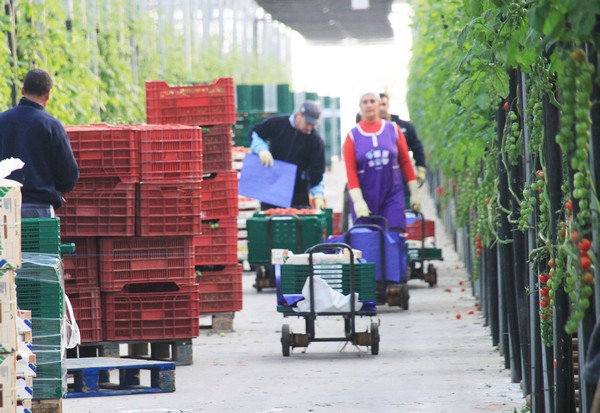Spain's solar greenhouse sector, based mainly in the provinces of Almería and Granada, generates a total of 110,000 jobs; that is, 24.8% of Andalusia's agricultural employment. Out of this, 78,000 workers are employed in farms (cultivation, irrigation, harvesting, etc.), 24,000 in marketing companies (handling and distribution), and 8,000 in auxiliary agricultural companies (seed companies, manufacturers of plastics, packaging and agricultural machinery, biological control, environmental control, etc.). This has been revealed by the "Analysis of employment in solar greenhouses" carried out in the framework of the European program Cutesolar: cultivating the taste of Europe in solar greenhouses.

An important feature of solar greenhouses is their ability to generate stable employment. Out of all the workers employed in greenhouses (78,000), 68% are permanent employees.
Family farming model
Contrary to what is often thought, the greenhouse acreage in these provinces is mostly owned by small family businesses that contribute to generating a cohesive economic activity that fosters entrepreneurship, cooperation, equality, and a commitment to protecting natural resources and the environment. Specifically, the 36,000 hectares of greenhouses are managed by 14,500 families, with an average of 2.3 hectares of land per family business.
The business environment chosen by the owners is based either on an associative or cooperative system (cooperative societies and agricultural processing companies, SAT) or on local marketing companies (such as alhóndigas or auctions). Currently, 62% of fruit and vegetable marketing in Almeria is carried out by social economy entities. Both models guarantee access to the market under optimal conditions, as they ensure a better position within the supply chain and facilitate financing, technical advice, and access to technology.
Example of immigrant integration
This industry is an example of immigrant integration into agriculture. In fact, 65% of the agricultural workers in the last campaign were foreigners (up to 140 nationalities); a figure that quadruples the regional average and almost triples the national average. According to data from the Argos Observatory of the Andalusian Employment Service, Morocco, Romania, and Senegal provide the largest number of workers to the greenhouses in southern Spain.
Increasing presence of women
In the last few years, we have seen a development in the role of women in this sector, having become much more active, relevant, and numerous. Of the 110,000 workers in the sector, around 41% are women, 30% of whom work in agricultural tasks on farms, 70% in marketing companies at all levels, and 30% in technical consultancy positions where higher education is required.
 For more information:
For more information:
CuteSolar
www.cutesolar.es
